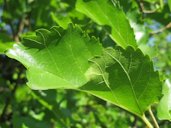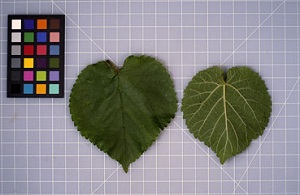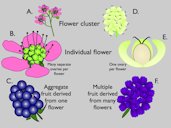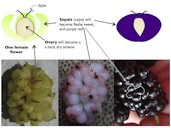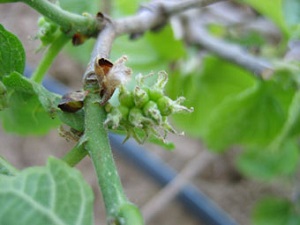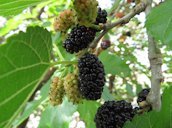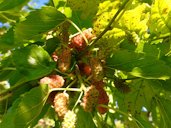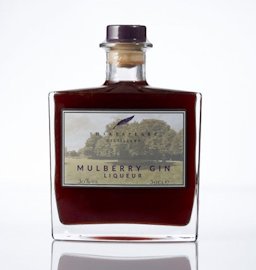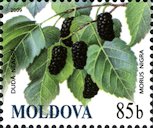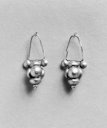| Mulberry, Black - Morus nigra | |||||||||||||||||||||||||||||||
|---|---|---|---|---|---|---|---|---|---|---|---|---|---|---|---|---|---|---|---|---|---|---|---|---|---|---|---|---|---|---|---|
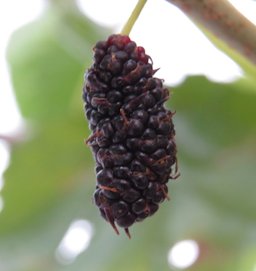 Fig. 1  Morus nigra 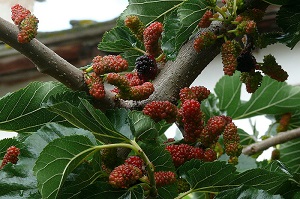 Fig. 2  M. nigra, fruit taken in the village Theologos on Thasos (Greece) Note: very short peduncles  Fig. 3  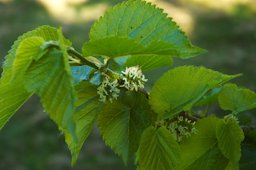 Fig. 7  Black Mulberry flowers. Photo taken in Belgium. 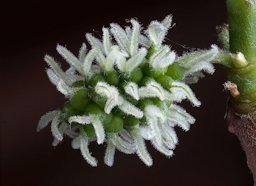 Fig. 8  Female flowers of a monoecious variety of the black mulberry 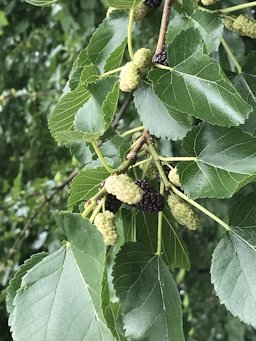 Fig. 13  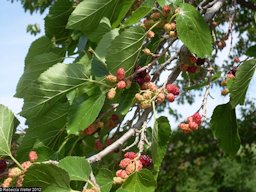 Fig. 14  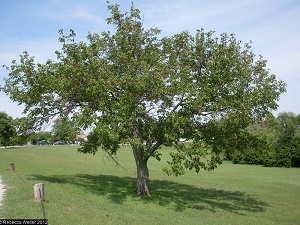 Fig. 17  M. nigra L. black mulberry United States, TX, Tarrant Co., Inspiration Point Marion Samson Park 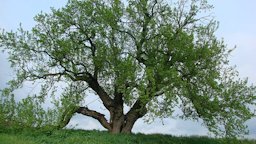 Fig. 18  Antico gelso nero (M. nigra), Italy Fig. 19  Mûrier remarquable (M. nigra) devant la mairie d'Augergenville (Yvelines, France)  Fig. 20  The mulberry has royal associations dating back to Tudor times and has a spreading habit and becomes crooked and gnarled with time, making an organic architectural feature. 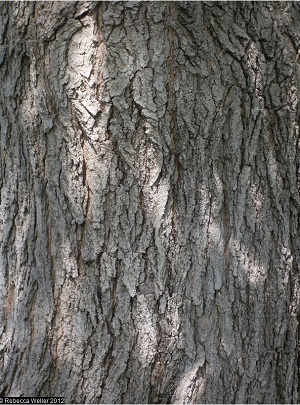 Fig. 21  M. nigra L. black mulberry 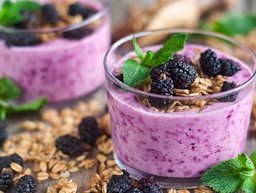 Fig. 22  Mulberry smoothie with granola 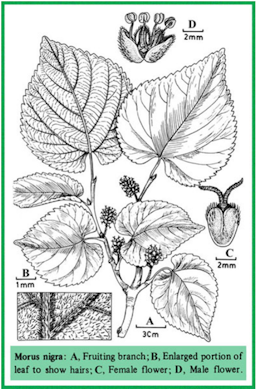 Fig. 29  Taxon: M. nigra |
Scientific
name Morus nigra L. Common names English: black mulberry, toot tree, Persian mulberry; French: mûrier noir; German: schwarzer Maulbeerbaum; Spanish: moral negro, morera negra 1 Synonyms English: black mulberry; Afrikaans: swartmoerbei; Arabic: tert ; French: mûrier noir; German: schwarzer Maulbeerbaum; Japanese Rōmaji: kuromi-guwa; Portuguese: amoreira-negra; Spanish: moral negro, morera negra; Swedish: svart mullbär; Transcribed Chinese: hei sang; Transliterated Russian: šelkovica černaja 9 Relatives Korean Mulberry (M. australis), Himalayan Mulberry (M. laevigata); breadfruit (Artocarpus altilis), jackfruit (A. heterophyllus), fig (Ficus spp.), che (Cudrania tricuspidata), African breadfruit (Treculia african) 1 Family Moraceae Origin Native to western Asia 1 USDA hardiness zones 7-10 Uses Fruit eaten out of hand; used as shade tree; attracts wildlife Height 30 ft (9 m ) 5 Spread 35 ft (10.7 m) 5 Crown Rounded, dense canopy 2 Plant habit Gnarly, somewhat zigzagged growth appearance; preading with a low canopy 5,8 Growth rate Slowest growing mulberry species 8 Longevity Have been known to bear fruit for three hundred years 13 Trunk/bark/branches Bark dark brown, light green or orange; furrowed or scaly 5 Pruning requirement Train the branches to a sturdy framework and little pruning is required Leaves Deciduous; rough; often unlobed 13 Flowers All species have either male or female flowers (dioecious); trees may be sold as male or female 5 Fruit Prolific, black multiple fruit drupelets; 1-1.5 in. (2.5-4 cm); berries hug the branch 5,6 Season Early May to early June 20 Light requirement Full sun to partial shade 5 USDA Nutrient Content pdf Soil tolerances Tolerant of poor soil; appears to thrive in the infertile sandy soil found across much of Florida 6 pH preference Slightly acidic to highly alkaline 5 Drought tolerance Although somewhat drought-resistant, mulberries need to be watered in dry seasons 1 Aerosol salt tolerance Good in mild zone 5 Cold tolerance Limited to USDA Hardiness Zone 7 (0° to 10° F average minimum) or warmer 1 Plant spacing At least 15 ft (5 m) apart 1 Roots Potential damage is rated as high 5 Invasive potential * Not a problem species Pest resistance The Caribbean fruit fly sometimes infests the fruit in south Florida 6 Known hazard Fruit leaves an indelible stain 6 Male trees are extremely allergenic and should be avoided, while female trees cause few or no allergies. The pollen from members of the Morus genus can cause allergies ranging from hay fever to asthma 8 Reading Material Morus nigra, Agroforestry Database Black Mulberry Tree (Morus nigra), Arthur Lee Jacobson Origin The black mulberry is native to western Asia and is the species most cultivated worldwide for its fruit. Long ago, this species found its way to ancient Greece and Rome, and thence to other parts of Europe. As if foreshadowing the discrepancies between common names and fruit colors, the Roman author Ovid, in the firs century A.D., recounts in his story of Pyramus and Thisbe that the black mulberry was originally white fruited. The fruit turned dark red as commemoration of the blood of these tow lovers, forbidden by their families to marry, whose rendezvous beneath mulberry tree turned to tragedy. Pyramus, mistaking blood on a fallen veil to be that of Thisbe, plunged his sword into his hear, and then Thisbe, arriving later and realizing what had happened, took the sword and followed him into death. 15 Description Living for hundreds of years in favorable locations, Morus nigra mulberry trees often hold a position of reverence in European settings. Mulberries in general command little respect in the United States, but Morus nigras tend to be sought out over other mulberry rivals. As they are more desired, unwittingly or not, sellers quite often have other cultivars of mulberry labeled as Morus nigra. Look for named cultivars when purchasing: 'King James I' and 'Noir of Spain' are your best bet; 'Persian' and 'Black Beauty' may or may not be Morus nigra, depending on the nursery. The 'Dwarf Everbearing' is NOT Morus nigra. 8 Black mulberry (Morus nigra) produces what many consider to be the highest quality mulberry fruits. Fruit from these trees is almost without exception black. Black mulberry trees are more popular in warmer, drier areas like California; when grown in Florida, they're generally smaller with a more bush-like habit. If you're looking for a mulberry bush worthy of the nursery rhyme, black mulberry just may fit the bill. 18 Red mulberry trees and white mulberry trees can both grow quite large while black mulberry trees are generally the smallest. When considering their mature size, black mulberry trees may be the most practical choice for home gardens. 18 Leaves Black mulberry leaves are rough and often unlobed, like those of red mulberry, but the black mulberry has sturdier twigs and fatter buds. 15 The lower leaf surface of Morus nigra is quite hairy, giving a soft pubescent feel when lightly stroked. Morus nigra and Morus rubra leaves (and most hybrids) will have a sandpaper like feel when stroked gently on the upper leaf surface in the direction of the petiole. Morus alba cultivars will feel nearly the same in either direction. 8 Morus nigra has a gnarly, somewhat zigzagged growth appearance with relatively short internodes (distance between buds). M. nigra has large, dark brown or black buds (hence "nigra") relative to other mulberries. 8 The black mulberry is the last of the three species to leaf out.
Flowers Mulberry trees are either dioecious or monoecious, and sometimes a tree even will change from one sex to another. Hight temperatures, strong light, and long days favor maleness in mulberries, with their opposites, as well as high humidity, bringing out female flowers. 15 The flowers are held on short, green, pendulous, nondescript catkins that appear in the axils of the current season's growth and on spurs on older wood. 1 Red mulberry (M. rubra) can have both male and female trees as well as male and female flowers on the same tree. Only female trees or those with both male and female blooms will produce fruit. 2 The greenish to white inconspicuous flowers appear in clusters in the spring, with male and female flowers occurring either on the same tree or separate trees. 8 Mulberries cluster their tiny flowers together into dense and well-defined inflorescences. And, all the flowers on an inflorescence then develop into a single fused unit, which we casually call a fruit. Mulberries make separate flowers with only one or the other sex: “female” flowers lack stamens, and “male” flowers lack pistils (Fig. 9). Both female and male flowers also lack petals. So, for example, a “female” mulberry flower will have only sepals and a pistil, and a “male” flower will have only sepals and stamens. Male flowers therefore cannot make fruit just as female flowers cannot make pollen. Tiny mulberry flowers make miniscule fruits; by sticking together across the entire inflorescence, they masquerade as one large fruit and probably enhance their power to entice birds and improve their dispersal efficiency. But that’s not the mulberry’s only beauty secret. Strictly speaking, mulberry fruits are not that attractive. They are hard dry achenes with the appeal of a grain of sand. To make themselves sweet and juicy, they plump up the only other flower parts they have - their sepals (Fig. 11). This is in contrast to blackberries, denizens of the rose family (Rosaceae), whose flowers, fruits and seeds are structurally distinct from those of mulberries (Fig. 10). 2
Fig. 10. A-C Blackberry. D-F Mulberry. Mulberries resemble blackberries, but blackberries derive from a single flower with multiple fleshy ovaries, whereas mulberries derive from multiple flowers, each with a single hard ovary and fleshy sepals. Fruit Mulberries of the Morus nigra species are generally regarded as the most flavorful. Laboratory tests consistently show them to be higher in sugars, antioxidants, and organic acids (component of flavor) than other mulberries. 8 The collective fruit, which may be red, green, white, purple, or black in color, is composed of the swollen ovaries of numerous tiny flowers. The fruit stem penetrated the length of the fruit. 6 Fruits of Morus nigra are large and juicy, with a congenial blend of sweetness and tartness that makes it the best-flavored species of mulberry. The refreshing tart taste is in some ways reminiscent of grapefruit. It leafs out almost two months after the other two species, and fruits ripen late, from midsummer into autumn. 1,15 Seeds are seldom found in Morus nigra fruit in the United States, most likely due to the lack of pollinators, since plants bought here are usually dioecious females. 8
Fig. 15. The ripe black berries are sweet, juicy and refreshing. Fujimimachi Kogure, Maebashi, Japan. Varieties There is little difference among most black mulberry cultivars (they all are excellent), and 'Black Persian' and 'Noir of Spain' are the ones most commonly grown. In Greece, the cultivar 'Mavromournia' is reputedly delectable and has suffficient firmness to give it market potential. 15 Some Morus nigra cultivars: AGM, Zones *6-10 Black Beauty, Zones *6-10 Chelsea-King James, Zones *6-10 Jerusalem, Zones *6-10 Kaester, Zones *6-10 Noir of Spain, Zones *6-10 *Note: Morus nigra has been reported to thrive in dry winter locations of USDA Hardiness Zone 6. 8 Harvesting Fruit should be allowed to thoroughly ripen on the tree for best quality and flavor. Harvest by shaking the branches over a clean sheet in May. 11 Separate ripe fruits from the leaves, twigs, insects, and unripe fruits that also fall by dumping the whole mess into a pail of water. Everything except the ripe berries will float and can be decanted. 15 Black mulberry fruits are more difficult to pick. As the berries are squeezed to pull them loose, they tend to collapse, staining the hands (and clothing) with blood red juice. Pollination Pollination is not usually a problem, because mulberries are wind-pollinated (anemophily), and some plants, the cultivars 'Illinois Everbearing' and 'Hicks', both M. rubra, for example - will set fruit without any pollination whatsoever. 15 Propagation Mulberries can be grown from seed, although the plants can take 10 years or more to bear. Seed should be sown as soon as extracted from the fruit. 1 Sprig budding is the most common method for grafting mulberries. Other types of grafts are also usually successful, although there may be incompatibility between white and black mulberries. Hardwood, softwood and root cuttings also are suitable methods for propagating mulberries. Black mulberries are also somewhat difficult to propagate since they tend to bleed a lot. 1 Pruning No special pruning techniques are needed after the branches have been trained to a sturdy framework, except to remove dead or overcrowded wood. A mulberry tree can be kept to a tidy form by developing a set of main branches, and then pruning laterals to 6 leaves in July in order to develop spurs near the main branches. It is not advisable to prune the trees heavily since the plant is inclined to bleed at the cuts. Cuts of more than two inches in diameter generally do not heal and should be avoided at all cost. The bleeding will be less severe if the tree is pruned while it is dormant. 1 Climate Here in the United States, Morus nigra does well in the hot, but dry Southwest, and also does well in the wet, but cool Northwest coastal region, or wherever yearly temperatures have a typical maximum range of zero to 85 degrees F. In all other regions in the United Stated (in USDA Plant Hardiness Zones 7 to 10) Morus nigra struggles to survive. Here they most likely will require fungal, and perhaps, bacterial sprays and a good fertilization program to flourish and be productive. 8 Irrigation The first year is a critical time for the establishment of a new mulberry. Water thoroughly twice a week on light soils and once a week on clay soils. Soak the entire root system deeply. 11 Although somewhat drought-resistant, mulberries need to be watered in dry seasons. If the roots become too dry during drought, the fruit is likely to drop before it has fully ripened. 1 Food Uses The berries can be eaten out of hand or used in any way that other berries are used, such as in pies, tarts, puddings or sweetened and pureed as a sauce. Slightly unripe fruits are best for making pies and tarts. Mulberries blend well with other fruits, especially pears and apples. They can also be made into wine and make an excellent dried fruit, especially the black varieties. 1 The ripe fruits of the black mulberry contain about 9% sugar with malic and citric acid. 1 Unwashed berries will keep several days in a refrigerator in a covered container. 1
Fig. 23. Mulberry pie Fig. 24. Cold mulberry soup with ginger yogurt Fig. 25. Mulberry gin liqueur Fig. 26. Mulberry lemonade Other Uses Natural dyes produce an extraordinary diversity of rich and complex colours as well as unexpected results, making them exciting to use. Natural dyes have been used for staining wool, silk, carpet and cotton. Black mulberry (Morus nigra) having strong staining capacity, is used in the processing industry for products such as fruit juice, ice cream, jelly, and jam. 10 General The word "mulberry" has an interesting etymological evolution. The Old High German word for berry, beri, was combined with the Latin word morus to make the word múlbere. This word (múlbere) then morphed into the German name Maulbeer, which then transformed into the Dutch word moerbezie, and eventually the English word mulberry. 8 One thing about using mulberries is that your hands turn purple. I tried everything to remove the stain. I remembered I kept an article from 1977 from "Your Garden" magazine and there it was - the answer. Use the juice of green mulberries to remove stains on hands etc. I collected some green mulberries, rubbed the juice into my hands and instantly the stains disappeared. 16
Fig. 27. Stamp of Moldova Fig. 28. White gold mulberry earrings.This pair of mulberry earrings is decorated with granulation and repoussé. 11th-10th century BC. Other Edible Morus species: Red Mulberry, Morus rubra White Mulberry, Morus alba Further Reading Making Use of the Mulberry, Archives of the Rare Fruit Council of Australia Feasting on the Kampong Mulberry, Tropical Fruit News RFCI Mulberry Tree, Just Fruits and Exotics nursery Mulberry, California Rare Fruit Growers Mulberry Express, Eat The Weeds Mulberry Botanical Art List of Growers and Vendors | ||||||||||||||||||||||||||||||
| Bibliography 1 "Mulberry." California Rare Fruit Growers, 1996, crfg.org/wiki/fruit/mulberry/. Accessed 16 Oct. 2017. 2 katherineapreston. "Figs and Mulberries, inside and out." The Botanist in the Kitchen, 7 Sept. 2013, (CC BY-NC-SA 3.0), botanistinthekitchen.blog/2013/09/07/figs-and-mulberries-inside-and-out/. Accessed 6 Mar. 2020. 3 Orwa, C., et al. "Morus nigra L." Agroforestree Database: a tree reference and selection guide, version 4.0, 2009, Agroforestry, old.worldagroforestry.org/treedb2/AFTPDFS/Morus_nigra.PDF. Accessed 5 Mar. 2020. 4 Campbell, Julian. "Muddled Mulberries in Kentucky." Notes on Species, 2014, Bluegrass Woodland, bluegrasswoodland.com/Notes_on_Species.html. Accessed 17 Oct 2017. 5 SelectTree. "Morus nigra Tree Record." 1995-2020, selectree.calpoly.edu/tree-detail/morus-nigra. Accessed 13 Mar. 2020. 6 Boning, Charles R. Florida's Best Fruiting Plants- Native and Exotic Trees, Shrubs, and Vines. Sarasota, Pineapple Press, 2006. 7 Cowley Gilbert, Brandy. "Mulberry Tree." www.justfruitsandexotics.com/JFE/product-category/fruit-trees/mulberry/. Accessed 25 Oct. 2017. 8 Travis, Mark. Growing Mulberry, www.growingmulberry.org. Accessed 20 Mar. 2020. 9 "Taxon: Morus nigra L." USDA, Agricultural Research Service, National Plant Germplasm System, Germplasm Resources Information Network (GRIN-Taxonomy), National Germplasm Resources Laboratory, Beltsville, Maryland, 2020, U.S. National Plant Germplasm System, npgsweb.ars-grin.gov/gringlobal/taxonomydetail.aspx?id=24619. Accessed 15 Mar. 2020. 10 "Black mulberries (Morus nigra) as a natural dye for animal tissues staining." NISCAIR Online Periodicals Repository, Oct. 2010, NPARR 2(4), NISCAIR, nopr.niscair.res.in/handle/123456789/13543. Accessed 15 Mar. 2020. 11 Cowley Gilbert, Brandy. "Mulberry Tree." www.justfruitsandexotics.com/JFE/product-category/fruit-trees/mulberry/#lightbox/0/. Accessed 25 Oct. 2017. 13 "Thai silk." en.wikipedia.org/wiki/Thai_silk. Accessed 27 Oct. 2017. 14 Deane, Green. "Mulberry Express." Eat the Weeds and other things, too. www.eattheweeds.com/mulberry-glucose-controlling-hallucinogen-2/. Accessed 27 Oct. 2017. 15 Reich, Lee. Uncommon Fruits for Every Garden. Portland, Timber Press, 2004. 16 Gray, Christine. "Making Use of the Mulberry." Archives of the Rare Fruit Council of Australia. March 1995. Accessed 27 Oct. 2017. rfcarchives.org.au/Next/Fruits/Mulberry/Mulberry3-95.htm. Accessed 27 Oct. 2017. 17 Simmons Alan F. Growing unusual fruit. David and Charles Limited, Newton Abbot Devon, 1972. 18 "Mulberry (Morus spp.)." Gardening Solutions, UF/IFAS, gardeningsolutions.ifas.ufl.edu/plants/trees-and-shrubs/trees/mulberry.html. Accessed 5 Mar 2020. Photographs Fig. 1 Luiz, Diogo. "Black Mulberry, Morus nigra." iNaturalist, Research grade observation, 16 Feb. 2015, (CC BY-SA 4.0), Image cropped, www.inaturalist.org/observations/32791034. Accessed 19 Mar. 2020. Fig. 2 Haplochromis. "Morus nigra, fruit taken in the village Theologos on Thasos (Greece)." Wikimedia Commons, 2007, (CC BY-SA 3.0), commons.wikimedia.org/wiki/File:Morus_nigra_fruits.JPG. Accessed 27 Oct. 2017. Fig. 3 Marques de Castro, Giovanni. "Black Mulberry, Morus nigra." iNaturalist, Research grade observation, 8 Apr. 2016, (CC BY-SA 4.0), www.inaturalist.org/observations/2901389. Accessed 19 Mar. 2020. Fig. 4 Rockstein, Andreas. "Black Mulberry, Morus nigra." iNaturalist, Research grade observation, 20 July 2016, (CC0 1.0), inaturalist.org/observations/3710899. Accessed 19 Mar. 2020. Fig. 5,12 Smith, Jenny. "DMOR 41 - Morus nigra L." USDA, Agricultural Research Service, National Plant Germplasm System, Germplasm Resources Information Network (GRIN-Taxonomy), National Germplasm Resources Laboratory, Beltsville, Maryland, 2019, U.S. National Plant Germplasm System, npgsweb.ars-grin.gov/gringlobal/imagedisplay.aspx?lnk=222367. Accessed 24 Oct. 2017. Fig. 6 Seregin, Alexey P. "Black Mulberry, Morus nigra." iNaturalist, Research grade observation, 26 Nov. 2019, (CC BY-SA 4.0), Image cropped, www.inaturalist.org/observations/36099822. Accessed 19 Mar. 2020. Fig. 7 Hagens, Wouter. "Black Mulberry flowers. Photo taken in Belgium." Wikimedia Commons, 1 May 2007, Public Domain, commons.wikimedia.org/wiki/Morus_nigra#/media/File:Morus_nigra_B.jpg. Accessed 6 Mar. 2020. Fig. 8 JJ Harrison. "Female flowers of a monoecious variety of the Black Mulberry." Wikimedia Commons, 10 Apr. 2008, (CC BY-SA 3.0), commons.wikimedia.org/wiki/Morus_nigra#/media/File:Black_Mulberry_Female_Flowers.jpg. Accessed 20 Mar. 2020. Fig. 9 katherineapreston. "Mulberry inflorescences." Figs and Mulberries, inside and out, The Botanist in the Kitchen, 7 Sept. 2013, (CC BY-NC-SA 3.0), botanistinthekitchen.blog/2013/09/07/figs-and-mulberries-inside-and-out/. Accessed 6 Mar. 2020. Fig. 10 katherineapreston. "A-C Blackberry. D-F Mulberry. Mulberries resemble blackberries, but blackberries derive from a single flower with multiple fleshy ovaries, whereas mulberries derive from multiple flowers, each with a single hard ovary and fleshy sepals." Figs and Mulberries, inside and out, The Botanist in the Kitchen, 7 Sept. 2013, (CC BY-NC-SA 3.0), botanistinthekitchen.blog/2013/09/07/figs-and-mulberries-inside-and-out/. Accessed 6 Mar. 2020. Fig. 11 katherineapreston. "Mulberry flowers becoming fruits." Figs and Mulberries, inside and out, The Botanist in the Kitchen, 7 Sept. 2013, (CC BY-NC-SA 3.0), botanistinthekitchen.blog/2013/09/07/figs-and-mulberries-inside-and-out/. Accessed 6 Mar. 2020. Fig. 13 jeffreyaewick. "Black Mulberry, Morus nigra." iNaturalist, Research grade observation, White River State Park, Indiana, 20 July 2018, (CC0 1.0), www.inaturalist.org/observations/14552925. Accessed 19 Mar. 2020. Fig. 14 Weller, Rebecca. "Morus nigra L. black mulberry." Trees For Me, United States, TX, Tarrant Co., Inspiration Point Marion Samson Park, Apr. 7, 2012, USDA, NRCS, National Plant Data Team, Greensboro, NC 27401-4901 USA, 2017, The PLANTS Database, plants.usda.gov/core/profile?symbol=MONI#. Accessed 29 Oct. 2017. Fig. 15 belvedere04. "The ripe black berries are sweet, juicy and refreshing." iNaturalist, Research grade observation, Fujimimachi Kogure, Maebashi, Japan, 31 May 2018, (CC BY-SA 4.0), Image cropped, www.inaturalist.org/observations/12977245. Accessed 19 Mar. 2020. Fig. 16 Bisulli, Eddi. "Black Mulberry, Morus nigra." iNaturalist, Research grade observation, via it.wikipedia.org, 20 May 2020, (CC BY-SA 4.0), www.inaturalist.org/observations/3222272. Accessed 19 Mar. 2020. Fig. 17 Weller, Rebecca. "Morus nigra L. black mulberry." Trees For Me, United States, TX, Tarrant Co., Inspiration Point Marion Samson Park, Apr. 7, 2012, USDA, NRCS, National Plant Data Team, Greensboro, NC 27401-4901 USA, 2017, The PLANTS Database, plants.usda.gov/java/largeImage?imageID=moni_001_ahp.jpg. Accessed 29 Oct. 2017. Fig. 18 Tostapane, Frullatore. "Antico gelso nero (Morus nigra)." Wikimedia Commons, 24 Apr. 2010, (CC BY-SA 4.0), commons.wikimedia.org/wiki/Category:Morus_nigra#/media/File:Gelso.jpg. Accessed 21 Mar. 2020. Fig. 19 Spedona|. "Mûrier remarquable (Morus nigra) devant la mairie d'Augergenville (Yvelines - France)." Wikimedia Commons, 8 Oct. 2005, (CC BY 3.0), commons.wikimedia.org/wiki/Morus_nigra#/media/File:Aubergenville_-_Mûrier_remarquable_.JPG. Accessed 21 Mar. 2020. Fig. 20 Tebje, Mary. "Inspired Chilterns’ Landscapes at National Trust Cliveden." 25 June 2014, Mary Tebje, marytebje.com/2014/06/25/inspired-chilterns-landscapes-at-national-trust-cliveden/. Accessed 20 Mar. 2020. Fig. 21 Weller, Rebecca. "Morus nigra L. black mulberry." Trees For Me, United States, TX, Tarrant Co., Inspiration Point Marion Samson Park, Apr. 7, 2012, USDA, NRCS, National Plant Data Team, Greensboro, NC 27401-4901 USA, 2017, The PLANTS Database, plants.usda.gov/java/largeImage?imageID=moni_003_avp.jpg. Accessed 29 Oct. 2017. Fig. 22 Dzhordzhev, Mitko. "Mulberry smoothie with granola." Foodista, 6 Oct. 2017, (CC BY 3.0), www.foodista.com/recipe/W6JZYTMS/mulberry-smoothie-with-granola. Accessed 8 May 2020. Fig. 23 Culbert, Daniel. "Mulberry pie." June 2018. Fig. 24 Weathers, Sanura. "Cold Mulberry Soup With Ginger Yogurt." Foodista, June 29, 2010, (CC BY 3.0), www.foodista.com/recipe/3DZNLXX4/cold-mulberry-soup-with-ginger-yogurt. Accessed 6 Mar. 2020. Fig. 25 "Mulberry Gin Liqueur." Shakespeare Distillery, Cotswold Trading, www.cotswoldtrading.com/gifts-c7/boutique-spirits-c174/shakespeare-distillery-mulberry-gin-liqueur-50cl-p13048. Accessed 17 Mar. 2020. Fig. 26 Mathur, Neha. “Mulberry Lemonade.” Whisk Affair, 6 Apr. 2017, Updated 7 Mar. 2020, www.whiskaffair.com/mulberry-lemonade/. Accessed 6 Mar. 2020. Fig. 27 "Stamps of Moldova." Wikimedia Commons, 2 Sept. 2013, Public Domain, commons.wikimedia.org/wiki/Morus_nigra#/media/File:Stamps_of_Moldova,_030-09.jpg. Accessed 21 Mar. 2020. Fig. 28 Syrian artist. "Gold mulberry earrings. This pair of mulberry earrings is decorated with granulation and repoussé." The Walters Art Museum, VO.70 (57.608, 57.609), 11th-10th century BC, (CC 0), art.thewalters.org/detail/77401/pair-of-mulberry-earrings/. Accessed 8 May 2020. Fig. 29 Rafiq, M. "Taxon: Morus nigra." Flora of Pakistan, www.efloras.org/object_page.aspx?object_id=86861&flora_id=5. Accessed 24 Mar. 2020. * UF/IFAS Assessment of Non-native Plants in Florida's Natural Areas ** Information provided is not intended to be used as a guide for treatment of medical conditions. Published 1 Nov. 2017 LR. Last update 30 May 2021 LR | |||||||||||||||||||||||||||||||
